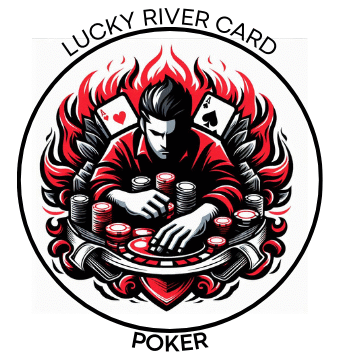
Starting with online poker can feel like stepping into a whole new world. Unlike its live counterpart, online poker offers unique challenges and advantages. The digital realm boasts a faster pace, diverse game varieties, and the convenience of playing from anywhere, anytime. But don’t let that intimidate you! With the right mindset and tools, you can master this dynamic game.
Many often wonder about the myths surrounding online poker. People say it’s luck-based or rigged. Spoiler alert: It’s not. Skill and strategy are your best friends here. Sure, luck plays a role, but consistent wins come from savvy play and understanding game nuances.
Choosing where to start is crucial. Names like PokerStars, 888poker, and PartyPoker are major players in this world, each offering a wide array of games suited for beginner to pro levels. Getting comfortable with one of these platforms can set a strong foundation for your poker journey.
As you gear up, think about what environment helps you focus best. Whether it’s the comfort of your living room or a quiet corner at a café, find what makes you tick. Stack up on resources, and prep your computer or device to handle any poker software smoothly.
There’s a lot of noise when you first start with online poker, but don’t worry too much. Focus on understanding the simple basics first: rules, etiquette, and game types. This initial understanding will build the confidence you need to explore the vast poker universe with more assurance.
The First Steps: Where to Begin?
Venturing into online poker can be exciting yet overwhelming, especially when trying to figure out where to start. First thing’s first, equip yourself with the right tools. A reliable computer or tablet with a stable internet connection is a must. It’s also wise to choose a poker platform that fits your style and skill level right off the bat.
When you’re new, sites like PokerStars or 888poker are a great bet. They offer beginner-friendly games and tutorials aplenty. Look for platforms that not only have a solid reputation but also provide secure transactions and a nurturing community. Safety is paramount, so consider effective security measures such as account verification and secure payment options.
Creating a suitable environment is half the battle won. Make sure your space is free from distractions. A comfortable seat, maybe a motivating playlist, and good lighting can make all the difference. It’s about finding the zen that keeps you focused and playing at your best.
Getting familiar with poker culture and etiquette will also put you in good stead. Learning the dos and don’ts can help you avoid common rookie errors. Keep practicing and don’t shy away from asking seasoned players for pointers. Most players are more than happy to share tips with newcomers who show genuine interest in improving their game.
Lastly, patience is your best ally. Poker, like any skill, takes time to master. Don’t rush; take one step at a time and enjoy the learning process. Soon enough, the intricate details of betting, bluffing, and hand strength will become second nature.
Finding Your Path: Best Poker Guides for Beginners
Diving into the world of online poker means arming yourself with top-notch resources. The best poker guides can really turn the game around for newbies aiming to up their skills.
“Poker for Dummies” is a classic go-to, breaking down the game in easy-to-digest pieces. For something more interactive, Jonathan Little’s books offer in-depth insights from a pro’s perspective. They explain various poker strategies in a friendly manner, making it simple for a beginner.
Online, sites like Upswing Poker and PokerStrategy provide quality guides and forums where you can learn a lot just by being part of discussions. These platforms offer both free and premium content, catering to different learning needs and budgets.
Consistency is your ally. Enroll in training programs like Daniel Negreanu’s MasterClass, where you can learn directly from the bigwigs. Such courses help in building strong foundational skills and instilling disciplined play.
Remember, practice makes perfect. Regularly engaging with these resources and gigs out there means you’ll grasp concepts faster. Reading and absorbing content is great, but actively applying what you’ve learnt is where the magic happens. The stories of veteran players often highlight how persistent practice helped them succeed.
Stay inspired by tapping into success stories from seasoned players who’ve climbed the ranks. These stories aren’t just motivational; they offer real lessons on navigating the highs and lows of the game.
Mastering Poker Strategies: The 10 20 30 Rule
When it comes to refining your poker strategy, the 10 20 30 rule is an insightful guide. This rule basically breaks down how you should be managing your playing methods.
Think of it like a balanced approach to your game. The ’10’ stands for the tight hand selection you should be making in games, focusing on playing only the best 10% of hands. This means being choosy and waiting for the right cards before you enter a pot, increasing your chances of success.
The ’20’ refers to aggression. Once you’ve chosen your hand, commit to aggressive play 20% of the time. This strategic aggression helps in building pots when you have strong hands and pressuring opponents when they might be weak. It’s about shifting gears from merely waiting to making decisive moves.
Moving onto ’30’, this number stresses the importance of calculated bluffs. Bluffing 30% of the time when you’ve got a good read on your opponents can lead to steals and easy wins. Don’t overdo it though; finding that balance between reality and perception is key.
Using the 10 20 30 rule requires practice and awareness. Applying it to real-life play, take the time to observe opponents and adjust your strategies accordingly. Every game is different, and the dynamics can change rapidly, but keeping this rule in mind can anchor your approach.
Whether you’re just starting out or refining your game, this rule is a solid framework to hang onto. It brings structure to how you play, helping you to edge closer to that tantalizing win.
Navigating the 2 4 Rule: A Strategic Approach
The 2 4 rule in poker is a straightforward, yet powerful tool in your poker arsenal. It’s all about calculating your outs and odds to make the best possible decision during a hand. This rule simplifies the often complex game of poker into something more manageable.
Here’s the deal. With the 2 4 rule, you can calculate your chances of improving your hand after the flop. Start by counting your outs—the cards that will strengthen your hand. Once you know your outs, multiply that number by 2 to estimate your chances of hitting one of those cards on the turn. If you’re looking toward the river, multiply by 4.
The simplicity of the 2 4 rule means it’s something you can quickly compute in your head during a game. This gives you a clearer picture of whether to call that bet or fold your hand.
Using this rule alongside strategies like the 10 20 30 rule can refine your approach even further. While the 10 20 30 rule gives structure on hand selection and playing style, the 2 4 rule zeroes in on tactical decision-making in the heat of play.
Expert players often use these rules as part of a broader strategy. Being nimble enough to adapt these principles based on the evolving nature of a poker game can turn a typical player into a poker shark in no time. Employing both the 10 20 30 and the 2 4 rules will definitely put you a step ahead in crafting a winning strategy.

It’s very interesting how there are many rules to poker. I would like to see more about what platforms that are safe and secure maybe a road map to where to go. I’ve honestly not tried online poker but from your post it seems very intriguing. Also is it easier to play poker online than going to a casino?
Thank you so much for your comment. There are so many places online now to play. I am going to try and do reviews for most of them on this page. Depending on whether you are looking for leisurely play or real money play, there are different platforms that excel at each. As far as which is easier, online or live, it depends on preference. Sometimes I love sitting around in my PJs and playing. Other times I’m looking to get out and mingle with people. The games are definitely different on a psychological mindset. You cannot read people online and you usually have to play much faster as there is a clock for each hand. Let me know if you have anymore questions and good luck at the tables!
I learned a lot reading this beginner’s guide, as I have always played poker for fun with the family and didn’t even know that half of these rules existed. Maybe next time I play I will have a better chance of winning for a change.
I was particularly interested to find out more about the 10 20 30 rule. So you should only bluff 30 percent of the time? That will be a challenge, especially when your hand is bad.
Are there any secrets to getting consistently good hands, like a lot of poker players seem to get? Or is it just luck of the draw?
Thank you so much for your comments and questions. I’d first like to say that I think a lot of poker players started off just where you are now. They learned to love the game by playing fun games with family. It’s a great way to work on skills you can take with you when ready to transition to playing for money.
Bluffing 30% is the base rule, but poker is a very in-the-moment kind of game. You will change up this rule depending on the type of people you are sitting with and on the hands you are getting. To answer your other question as well, unfortunately there is no way to control what hands you get. This part of the game is strictly luck. What you do with the hands you get is where the skill comes into play. If you ask any professional poker player, they will tell you the cards in your hand are not the most important factor in winning. It’s all about reading your opponents and being able to predict what they will do.
Good Luck at the tables!